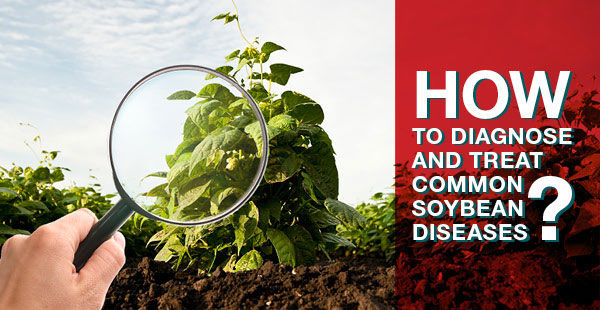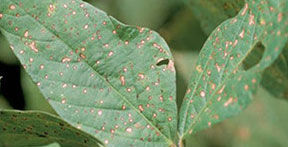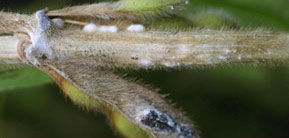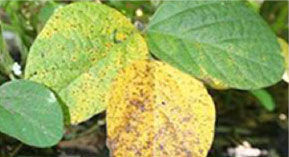How to Diagnose and Treat Yield-Robbing Soybean Diseases
January 24, 2018

Each new growing season presents challenges to your bottom line.
Take disease pressure, which can limit the yield potential of your beans. You've seen the telltale signs in seasons past: changes in color, shape, or function of your plants, leaf spots or blights, discoloration of plant tissue, and stunting or wilting.
But growers can get ahead of key soybean diseases, such as frogeye leaf spot, white mold and brown spot with timely fungicide applications.
The Best Time to Apply Fungicides to Soybeans
Randy Myers, Product Development Manager for Bayer, says that growers looking to limit damage should be aware of their fungicide application timing.
“Timely fungicide applications will be your best defense. The most effective applications for most diseases will come around beginning of pod set, or about R3," Myers said. "Applying a product like Delaro® fungicide or Stratego® YLD fungicide around R3 can help limit a lot of damage from common diseases like brown spot or frogeye leaf spot.”
An exception to that rule is white mold. Myers recommends an R1 application of Proline® or Delaro to manage that disease.
"First applications need to be made at flowering, or R1, because blossom petals are the typical medium for infection,” he said. “A second application around R3 is usually needed to get the full benefits of the treatments.”
Scouting for Soybean Diseases
Along with timely fungicide applications, it's important to scout before R3 growth stage, especially if weather has been rainy and/or humid. These conditions prove to be particularly favorable to foliar disease.
Frogeye Leaf Spot

Frogeye leaf spot is a serious disease annually affecting soybean growers, causing more than 30 percent yield loss if not properly managed.1 Symptoms to identify are:
- Brown, gray or tan spots with dark brown or purple borders
- A layered appearance when leaves are young
- Under severe disease pressure, lesions may combine and cause leaf drop
- Stems with dark red to brown spots
White Mold

Infection with white mold, also known as sclerotinia stem rot, is common during flowering under a wet, cool canopy. This occurs most commonly early in the season, but can redevelop later in the season as the summer’s heat recedes. Easy signs to look for include:
- White, fluffy, cottony growth on the outside of the stem and on the pods
- Wilted leaves and stems that appear bleached, along with tearing of the stem tissue
- Sclerotia (hard and dark fungal masses) can also be found on and inside plants that have been infected by white mold
Brown Spot (Septoria Leaf Spot)

Brown spot thrives during cooler, wet conditions. If left unchecked, it can damage plant leaves and stunt pod fill. Signs include:
- Brown or black spots on plant leaves that are angled or include a yellow ring or halo around spots
- Late-season infections force leaves to turn yellow and defoliate from plants prematurely
Sources:
1. Kleczewski, Nathan. 2014. "Frogeye Leaf Spot on Soybean." University of Delaware Cooperative Extension. http://extension.udel.edu/factsheets/frogeye-leaf-spot-on-soybean-2/